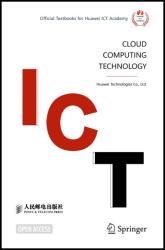Cloud Computing Technology
- Добавил: literator
- Дата: 5-10-2022, 14:06
- Комментариев: 0
 Название: Cloud Computing Technology
Название: Cloud Computing TechnologyАвтор: Huawei Technologies Co., Ltd.
Издательство: Springer
Год: 2023
Страниц: 389
Язык: английский
Формат: pdf (true)
Размер: 10.2 MB
This book introduces cloud computing and related technologies from the concept, technology, and architecture of cloud computing, combined with typical application cases of cloud; provides students with a more complete knowledge framework in the field of cloud computing; and lays the foundation for future research, development, and further study in cloud computing, Big Data, and other related fields.
As the world's leading provider of ICT (information and communication technology) infrastructure and intelligence terminals, Huawei's products are already available in a number of areas, including connectivity, security, wireless, storage, cloud computing, intelligent computing, and Artificial Intelligence (AI).
There are eight chapters in this book. Chapter 1 introduces an overview of cloud computing. It includes common cloud computing scenarios in life. The characteristics, definition, origin and development of cloud computing, as well as advantages and classification of cloud computing are discussed in this chapter. It also mentioned various types of supporting technologies for cloud computing and three perspectives on comprehending the business model, computing model and implementation of cloud computing. It also presents the state-of-art open source approach in cloud computing. Chapter 2 introduces the cloud computing system, starting from the four aspects of cloud infrastructure mechanism, cloud management mechanism, cloud security mechanism, and basic cloud architecture, and discusses some of the main technical mechanisms for building cloud technology architecture. Chapter 3 introduces virtualization technology, focusing on server virtualization technology, including its basic knowledge and supporting technologies, and discusses some actual virtualization products or applications based on theoretical knowledge, such as open-source virtual machine software KVM, Huawei FusionCompute cloud operating system, and desktop cloud.
Chapter 4 introduces the basic knowledge of network in cloud computing, including an overview of computer networks, basic principles of computer networks, network interconnection equipment, network virtualization and software-defined networks, etc., so that readers can better understand some important concepts of computer networks, principles, equipment, and new network technologies supporting cloud computing. Chapter 5 introduces the basic knowledge of storage in cloud computing and also introduces storage in cloud computing in detail from the basic knowledge of storage, basic storage units, network storage, storage reliability technology, storage virtualization, distributed storage, etc. Chapter 6 starts from practice, introduces the popular open-source cloud operating system framework OpenStack, analyzes various components of OpenStack, discusses its operating mechanism, and enables readers to master the skills of implementing and managing OpenStack.
Chapter 7 introduces the container technology that is widely concerned in cloud computing. It introduces the knowledge of container technology and container orchestration from the aspects of platform architecture, basic core functions, network, security, and resource management in a theoretical as well as practical model, which is convenient for readers to have a comprehensive understanding of Docker and Kubernetes ecosystem. Chapter 8 introduces the development status of cloud computing at home and abroad, analyzes and predicts its development trend, and discusses and analyzes the relationship between the Internet of Things, big data, artificial intelligence, 5G and other popular cutting-edge technologies, and cloud computing. It also introduces additional emerging technologies, such as edge computing and fog computing, microservices, and serverless computing.
Скачать Cloud Computing Technology
Внимание
Уважаемый посетитель, Вы зашли на сайт как незарегистрированный пользователь.
Мы рекомендуем Вам зарегистрироваться либо войти на сайт под своим именем.
Уважаемый посетитель, Вы зашли на сайт как незарегистрированный пользователь.
Мы рекомендуем Вам зарегистрироваться либо войти на сайт под своим именем.
Информация
Посетители, находящиеся в группе Гости, не могут оставлять комментарии к данной публикации.
Посетители, находящиеся в группе Гости, не могут оставлять комментарии к данной публикации.
